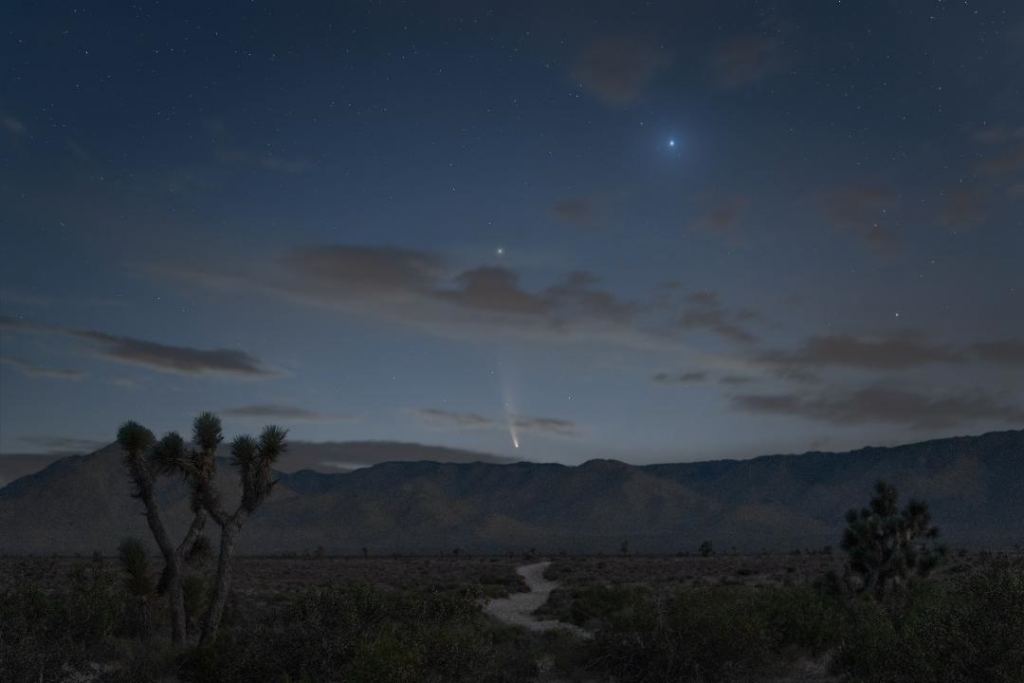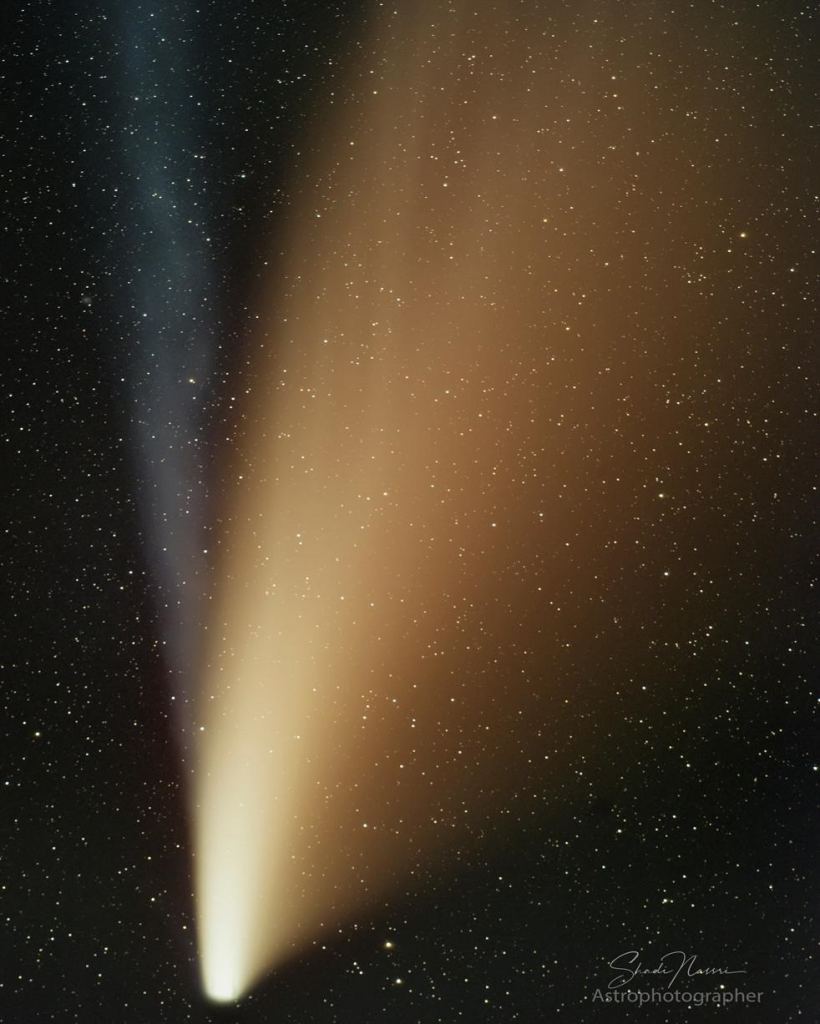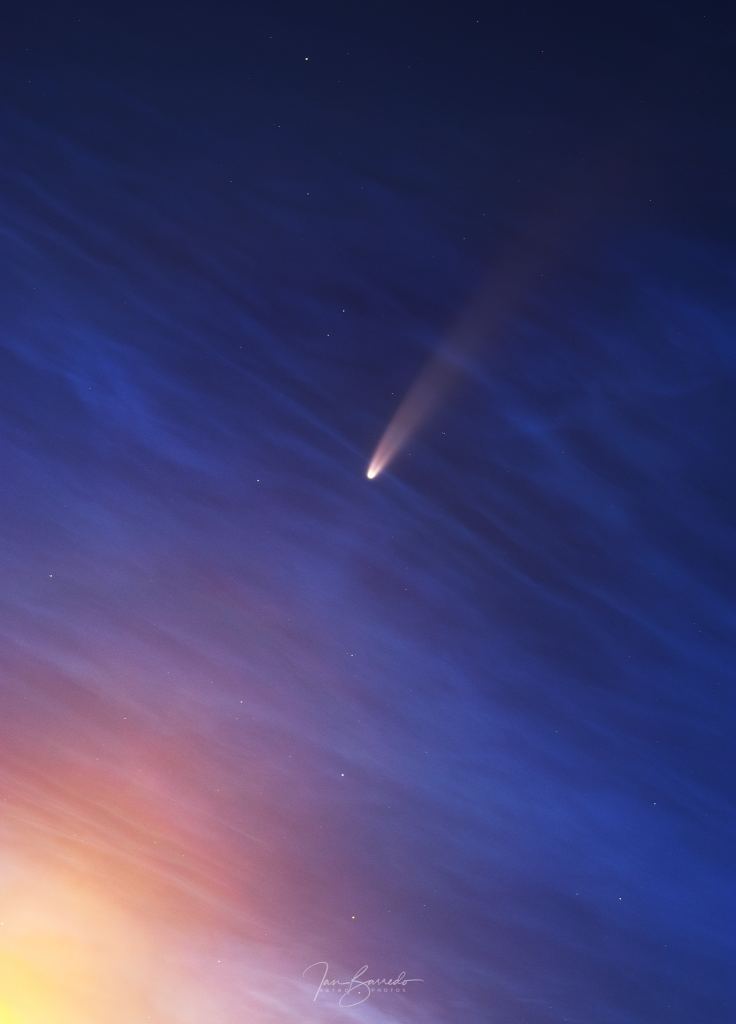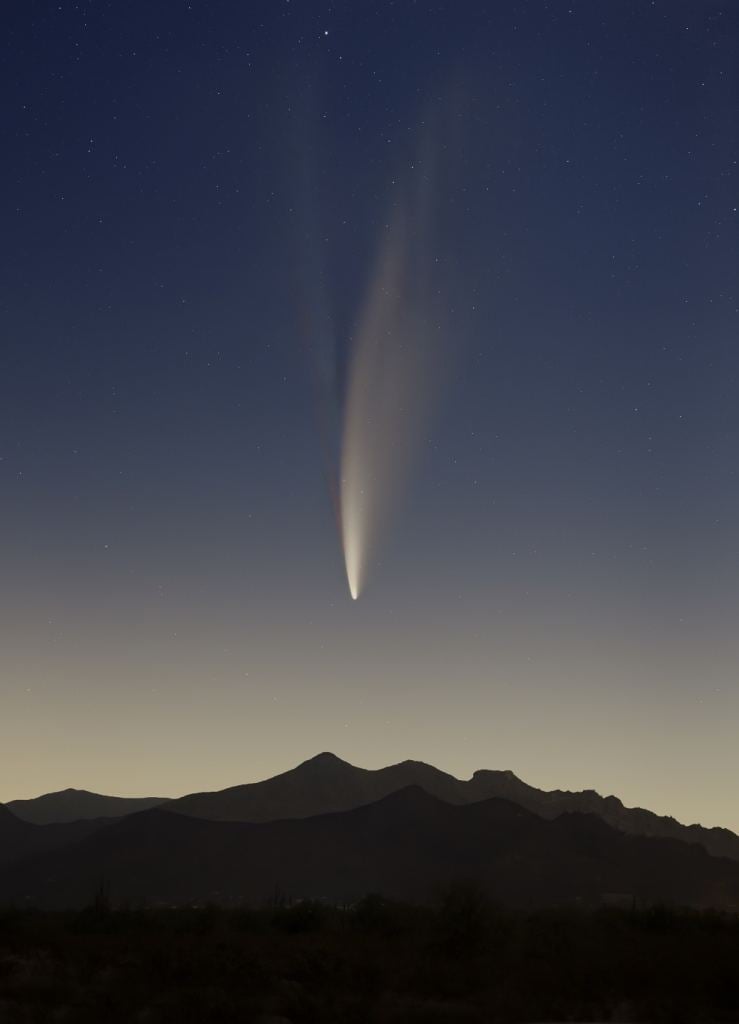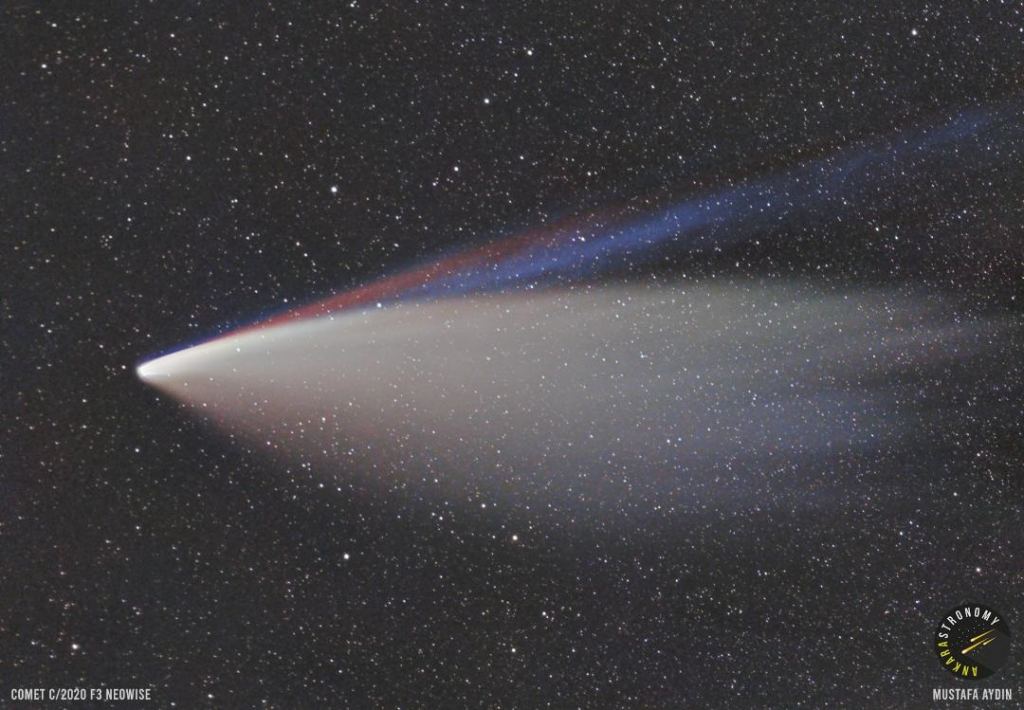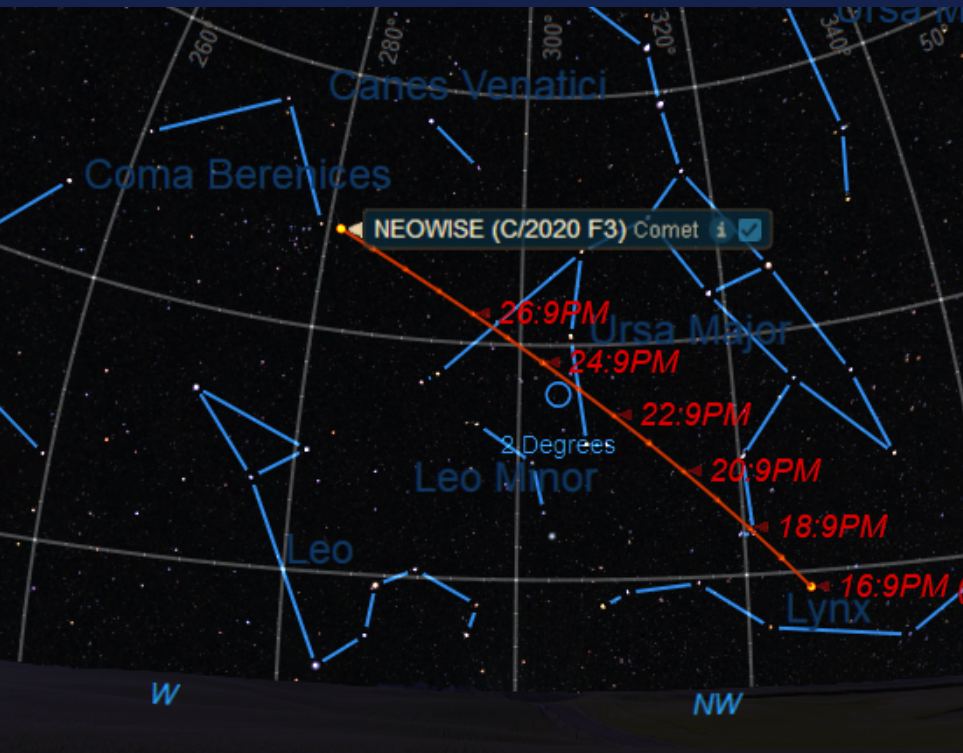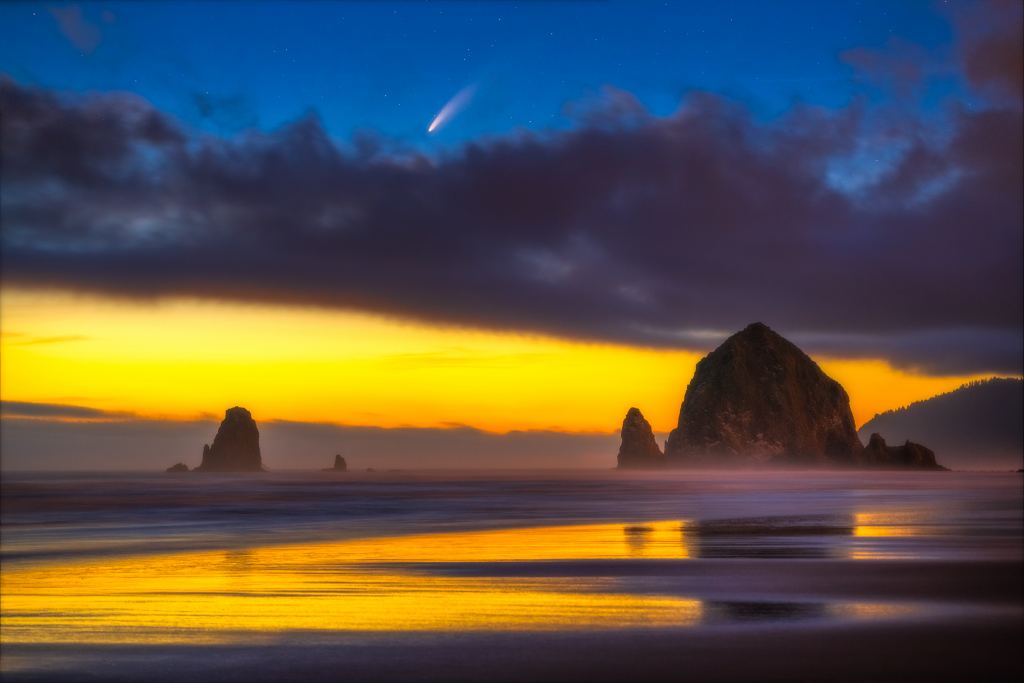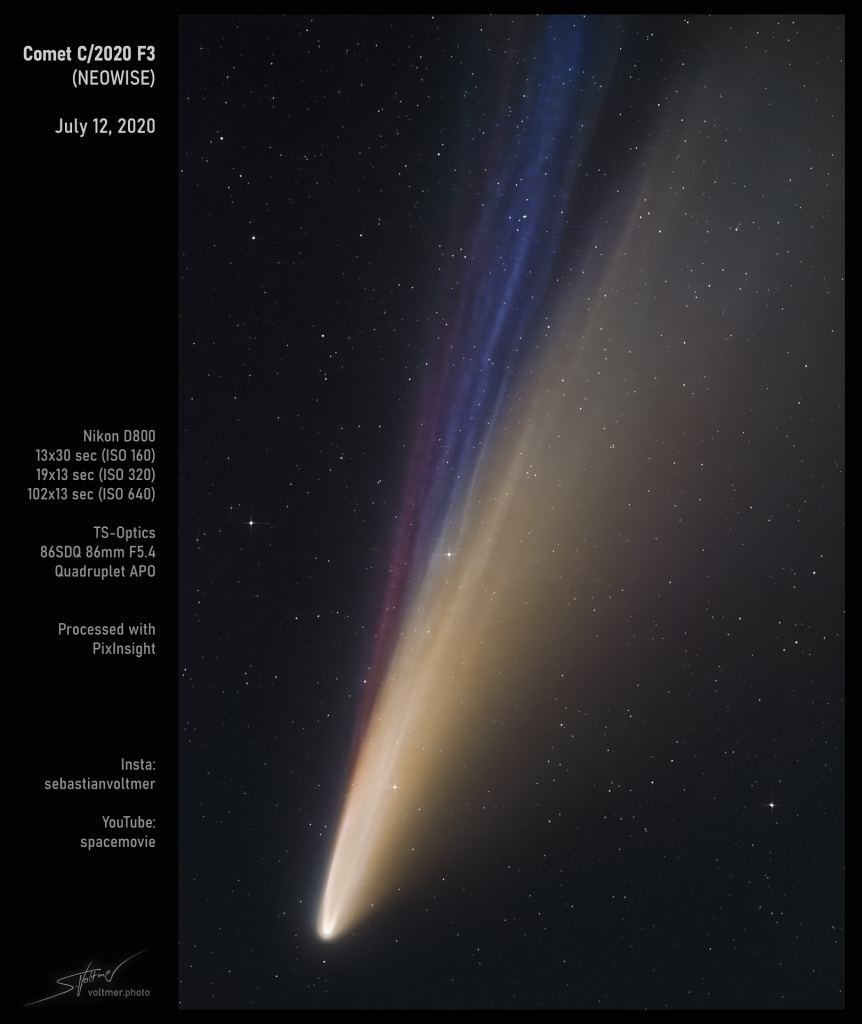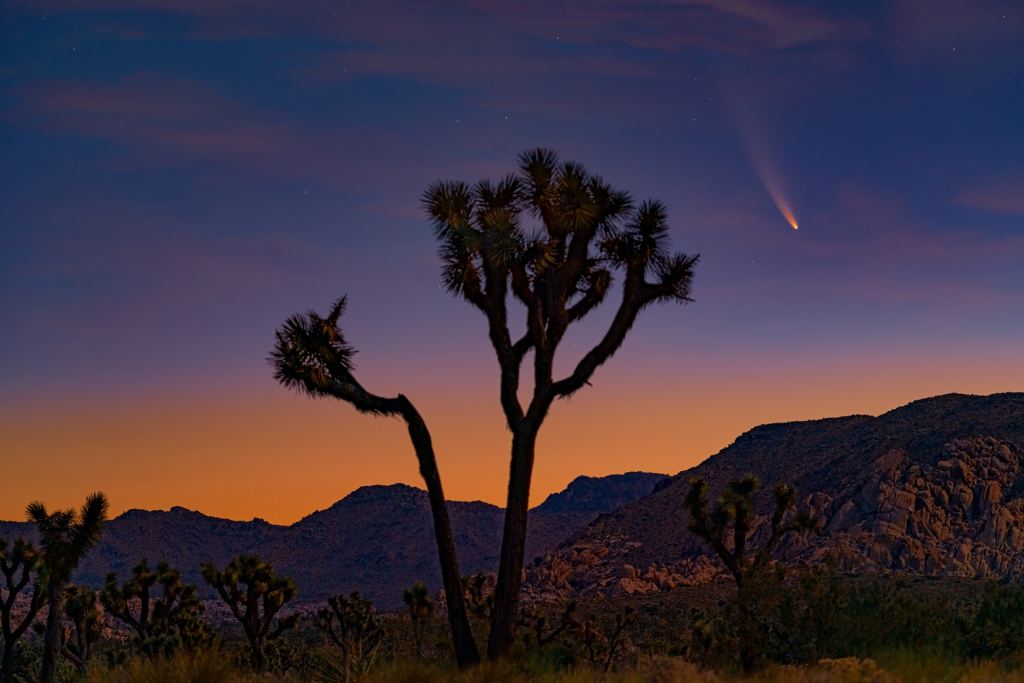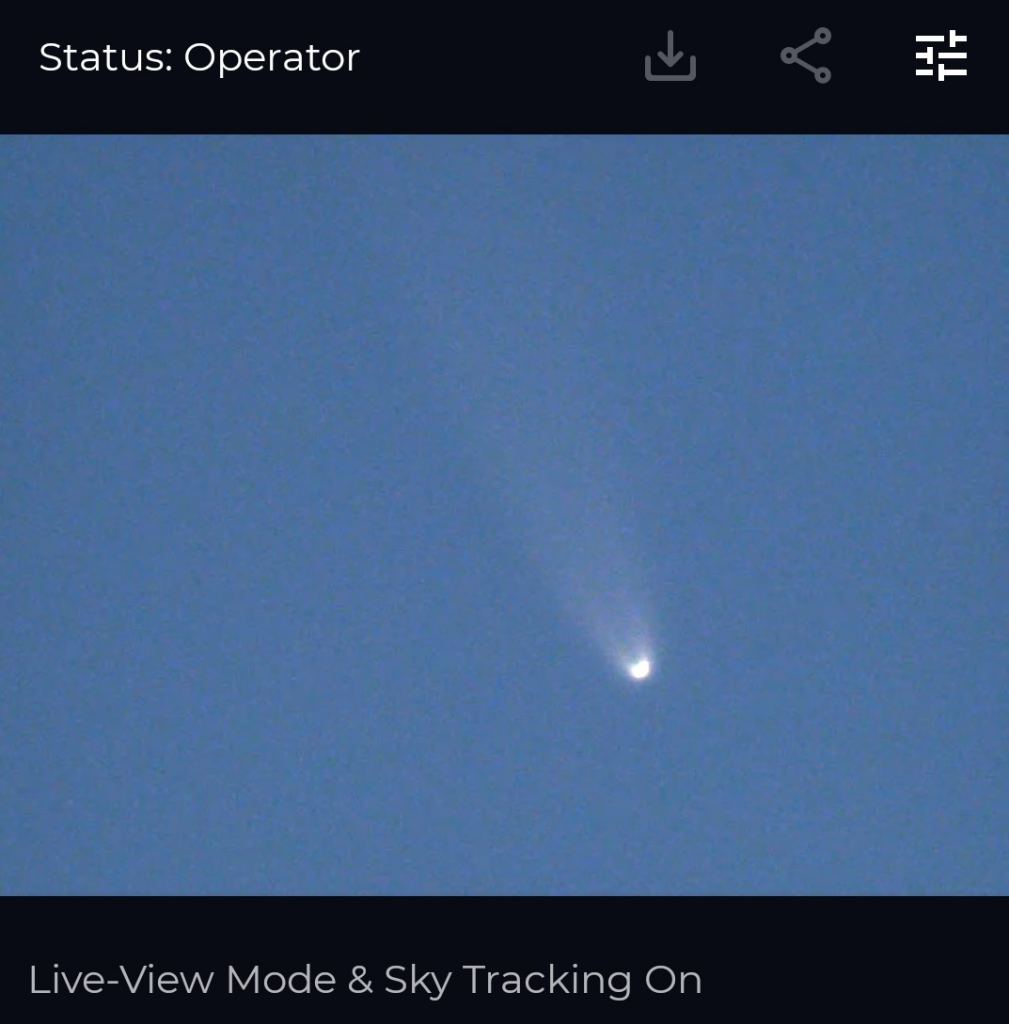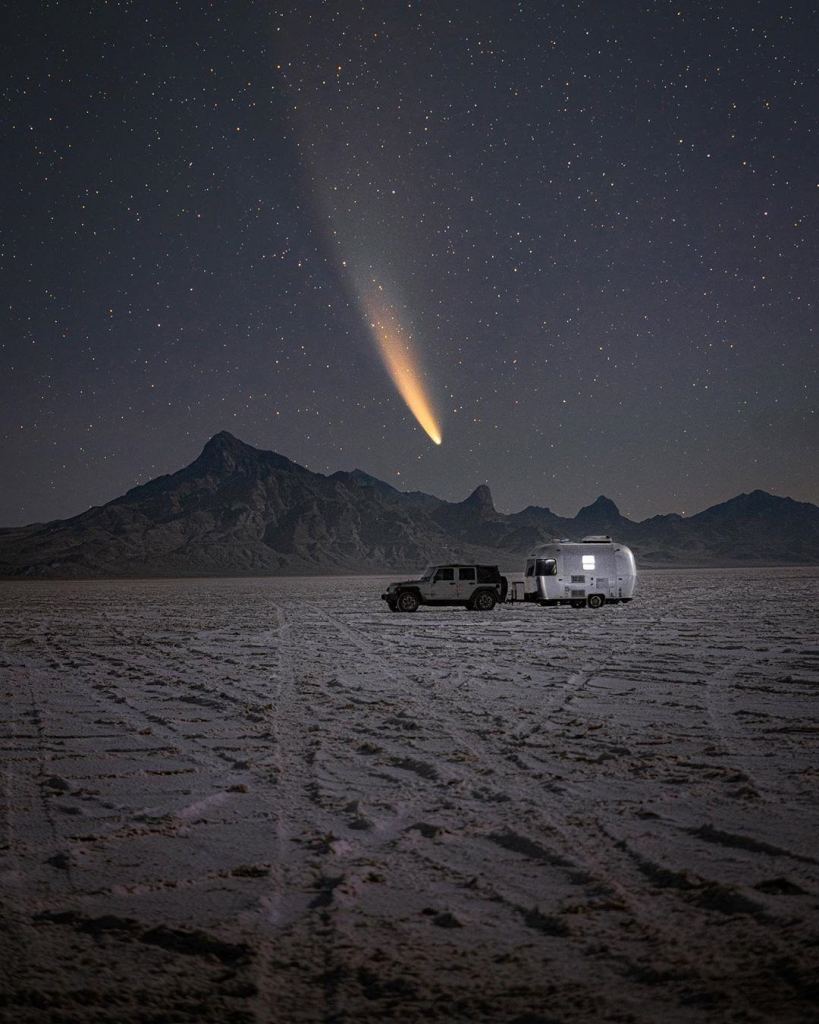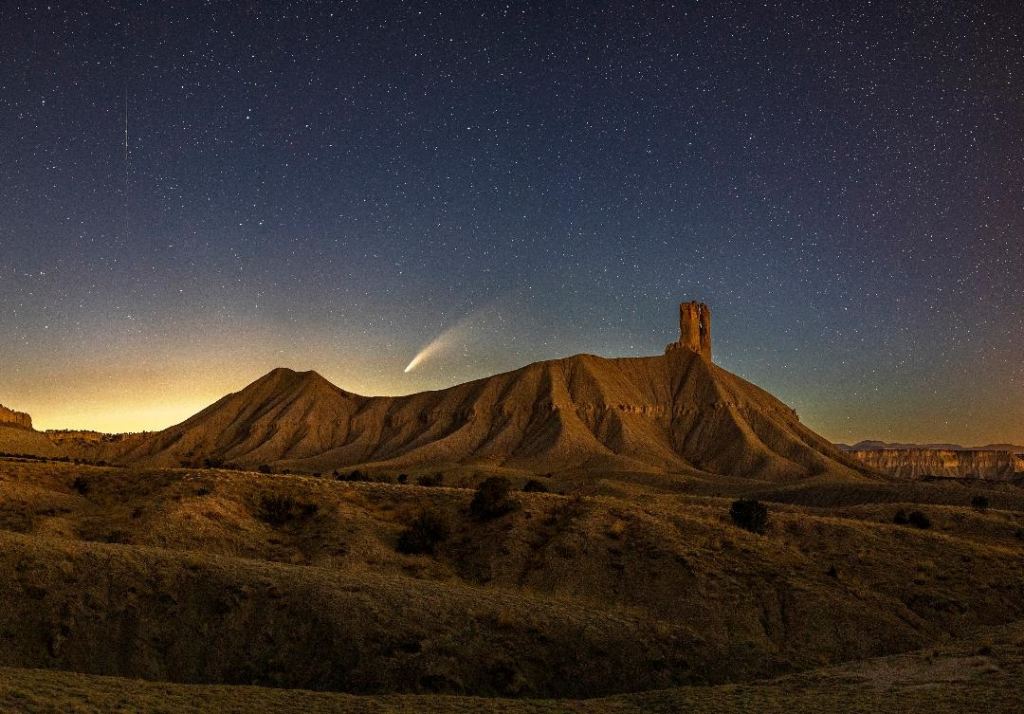Comet F3 NEOWISE continues to dazzle in these spectacular images.
Just. Wow. If you're like us, your space-feed has been inundated with some pretty spectacular images of Comet C/2020 F3 NEOWISE as of late. F3 NEOWISE broke from the pack of good binocular comets for 2020 early this month, to become one of the best northern hemisphere comets in a generation.
Discovered by NASA's Near Earth Object, Wide-field Infrared Survey Explorer in late March 2020, F3 NEOWISE survived perihelion on July 3rd, passing just 0.29 Astronomical Units (AU) from the Sun and reaching a splendid +1stmagnitude near its maximum.
And the best may be yet to come. The dawn apparition was a bashful one, hugging the horizon to the northeast about an hour prior to sunrise. I could juuuust make out the slice of the comet's tail against the brightening dawn sky last Saturday morning: binoculars made the comet jump out in contrast, reminiscent of Comet C/2011 L4 PanSTARRS at dusk back in 2013.
Still, many photographers braved the early morning wake-up over the past week, with amazing results. Once a comet reaches brighter than +2ndmagnitude, it becomes brilliant enough to catch it along with the terrestrial foreground.
Many observers noted a bifurcated, 'shadow nucleus', as the comet sprouted a twin ion versus dust tail, reminiscent of Comet Hale-Bopp in the late 90s. It's strange to think that the amazing doubleheader of Hale-Bopp and Hyakutake arrived right before the era of film gave way to digital astrophotography. We're certainly seeing the results of this revolution in the amazing flurry of spectacular images of F3 NEOWISE that are now trickling in.
Now, the celestial stage is set for Act 2. Already, comet F3 NEOWISE is circumpolar (above the horizon all night) as seen from north of latitude 45 degrees. It's now getting better to see at dusk low to the northwest as it slinks across the constellation of the Lynx and into the paws of the Great Bear Ursa Major, retracing the footsteps of the asterism known as the 'Three Leaps of the Gazelle.'
The good news is, comet F3 NEOWISE is getting closer to the Earth, and will pass by on its 6,500 year outbound orbit at 0.692 AU distant on July 23rd. This will show us the comet in profile, and I'll make a small bet that most of the general public will see it around this time… if it remains bright.
Strange but fun fact: comets actually sweep their tails out ahead of the inner coma and nucleus past perihelion, with the ion tail blowing out through the solar wind away from the Sun and the dust tail sweeping forward along its orbit.
If you've got clear skies, find a dark site and look for the comet tonight. We can just pick it out now with binoculars… and that's from downtown, light-polluted Norfolk. Mathew Browne has a photo-tutorial on PetaPixel on how to shoot the comet with your tripod-mounted DSLR and get amazing results.
Clouded out? The good folks at the Virtual Telescope Project have got you covered, with a live webcast featuring Comet F3 NEOWISE on July 23rd, hosted by astronomer Gianluca Masi.
Right now, the comet seems to be holding steady at about magnitude +2. It's also starting the swift climb out of the low horizon murk into the dark starry background this weekend, another plus. Will it remain bright? Will F3 NEOWISE continue to dazzle, or disintegrate? Unlike death and taxes, nothing is ever certain when it comes to comets, except their orbit. To quote Dr. Pamela Gay from a recent *Astronomy Cast* episode: "I'll believe it's a bright comet when it turns up in my eyepiece."
Enjoy these amazing images, and get out there and enjoy F3 NEOWISE, while it's still bright.
 Universe Today
Universe Today
